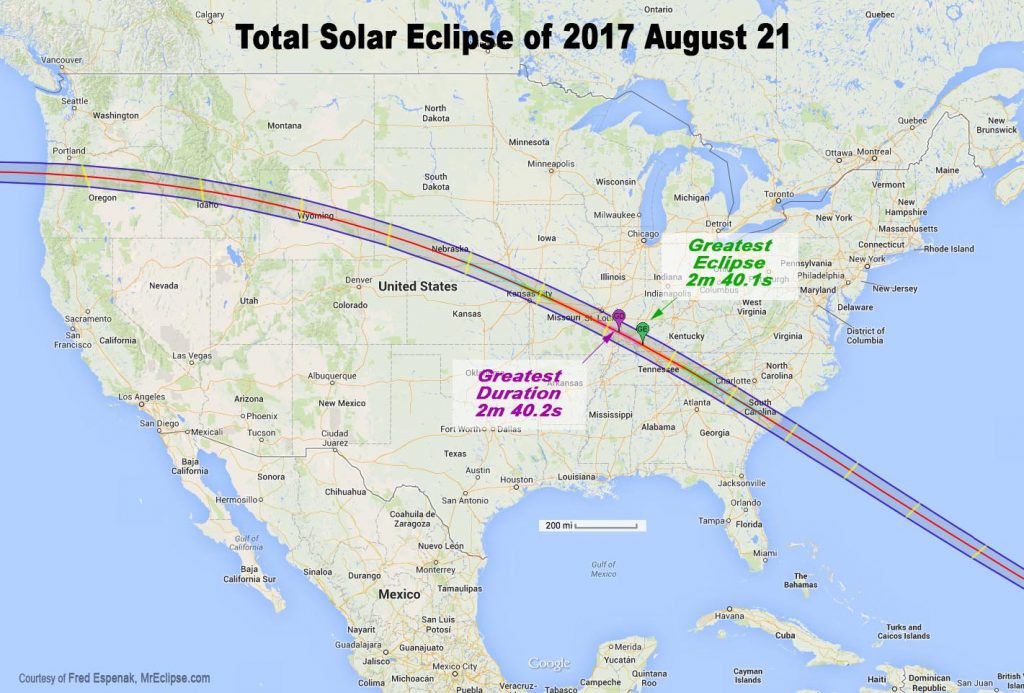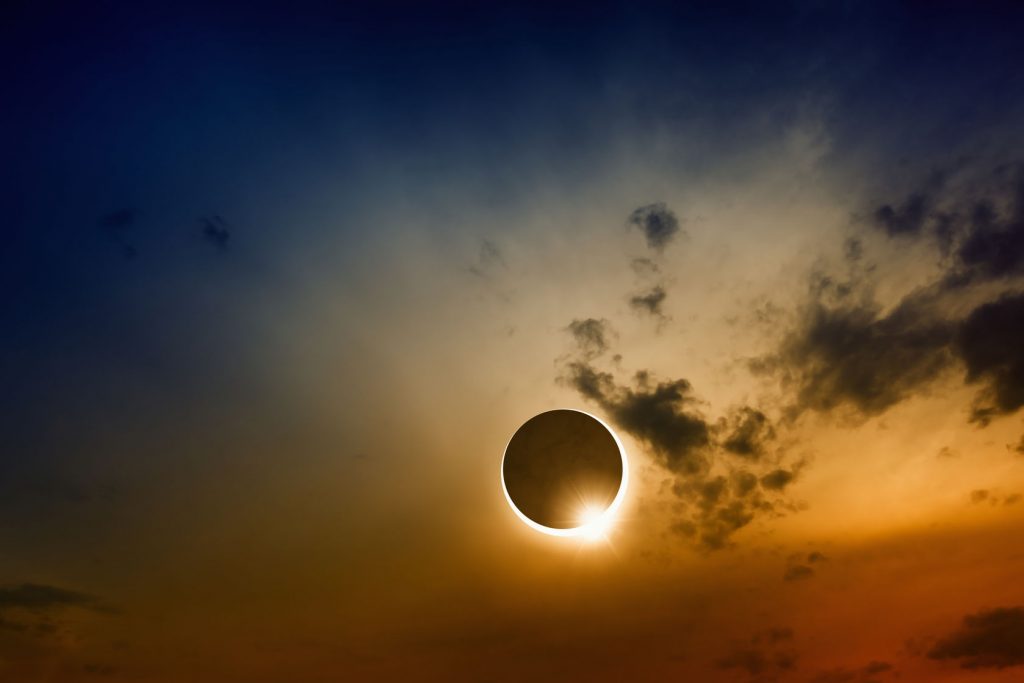A guide for the total solar eclipse of 2017
On August 21, skywatchers will be able to direct their attention to the sun, as the total solar eclipse will sweep across the continental US from Oregon to South Carolina along 70 miles (113 kilometers) of land, according to Space.
When and where you can see the total solar eclipse

The path of totality for the August 21 will pass through Idaho, Wyoming, Nebraska, Kansas, Missouri, Illinois, Kentucky, Tennessee, Georgia, North Carolina and South Carolina. This interactive map from NASA could help you zoom in on the path and find out the exact locations from which the eclipse will be visible.
The timing and duration of the total solar eclipse will depend on where you are inside the path of totality. Skywatchers that are outside the path of totality will be able to see a partial solar eclipse. Using data from NASA, Space made a chart listing the moment of mid-totality and the duration of totality for some cities that are close to the center of the path.
| Where | Eclipse Begins | Totality Begins | Totality Ends | Eclipse Ends | Daylight Time |
| Madras, OR | 09:06 a.m. | 10:19 a.m. | 10:21 a.m. | 11:41 a.m. | PDT |
| Idaho Falls, ID | 10:15 a.m. | 11:33 a.m. | 11:34 a.m. | 12:58 p.m. | MDT |
| Casper, WY | 10:22 a.m. | 11:42 a.m. | 11:45 a.m. | 01:09 p.m. | MDT |
| Lincoln, NE | 11:37 a.m. | 01:02 p.m. | 01:04 p.m. | 02:29 p.m. | CDT |
| Jefferson City, MO | 11:46 a.m. | 01:13 p.m. | 01:15 p.m. | 02:41 p.m. | CDT |
| Carbondale, IL | 11:52 a.m. | 01:20 p.m. | 01:22 p.m. | 02:47 p.m. | CDT |
| Paducah, KY | 11:54 a.m. | 01:22 p.m. | 01:24 p.m. | 02:49 p.m. | CDT |
| Nashville, TN | 11:58 a.m. | 01:27 p.m. | 01:29 p.m. | 02:54 p.m. | CDT |
| Clayton, GA | 01:06 p.m. | 02:35 p.m. | 02:38 p.m. | 04:01 p.m. | EDT |
| Columbia, SC | 01:03 p.m. | 02:41 p.m. | 02:44 p.m. | 04:06 p.m. | EDT |
How to keep your eyes safe during the eclipse

Those who plan to see the total solar eclipse of 2017 should get a pair of solar viewing glasses that make it possible to look at the sun directly before and after totality. The following companies sell eclipse glasses that meet the international standard (ISO 12312-2) recommended by NASA: Rainbow Symphony, American Paper Optics, Thousand Oaks Optical, Lunt Solar Systems and TSE 17.
Sunglasses cannot be used in place of solar viewing glasses. Furthermore, you should never look at the sun through binoculars, a telescope or a camera lens without a solar filter, as the magnified light might damage your eyes faster than looking unaided at the sun. It is only safe to look up at the eclipse with the naked eye when the disk of the sun is completely covered by the moon.
Those who are outside the path of totality will need either solar viewing glasses or a pinhole camera if they want to watch the total solar eclipse in a safe manner.
People who wear eclipse glasses need to follow these tips, according to Space:
– Inspect the solar filter before use and, if scratched or damaged, discard it
– Read and follow any instructions that come with the filter
– Never remove the filter or glasses while still looking at the sun
– Always supervise children using eclipse-viewing devices
The last solar eclipse set to take place in 600 million years

A total solar eclipse only occurs when the disk of the moon passes between the Earth and the sun, blocking the sun’s light briefly and casting a long shadow on the planet. The reason these eclipses occur is because the moon and the sun have the same apparent size in Earth‘s sky. “A total eclipse is a dance with three partners: the moon, the sun and Earth,” Richard Vondrak, a lunar scientist at NASA’s Goddard Space Flight Center in Maryland, said in a statement. “It can only happen when there is an exquisite alignment of the moon and the sun in our sky.”
However, the moon is slowly moving away from Earth by 1 – 1/2 inches (4 centimeters) per year, according to NASA, which means that total solar eclipses will cease to exist in the distant future, as the apparent size of the moon will be too small to cover the sun completely. “Over time, the number and frequency of total solar eclipses will decrease,” Vondrak said in the statement. “About 600 million years from now, Earth will experience the beauty and drama of a total solar eclipse for the last time.”
A total solar eclipse is visible from somewhere on Earth every 18 months or so, but seeing one from a specific location is rare, because the moon‘s inner shadow is quite small, thus limiting the total area from which the total eclipse can be visible. “You have to be on the sunny side of the planet, and you have to be in the path of the moon’s shadow,” NASA officials said in a video. “So, if you find your area in the path of totality one year, you’ve hit the jackpot, because on average, that same spot on Earth will only get to see a solar eclipse every 375 years.”